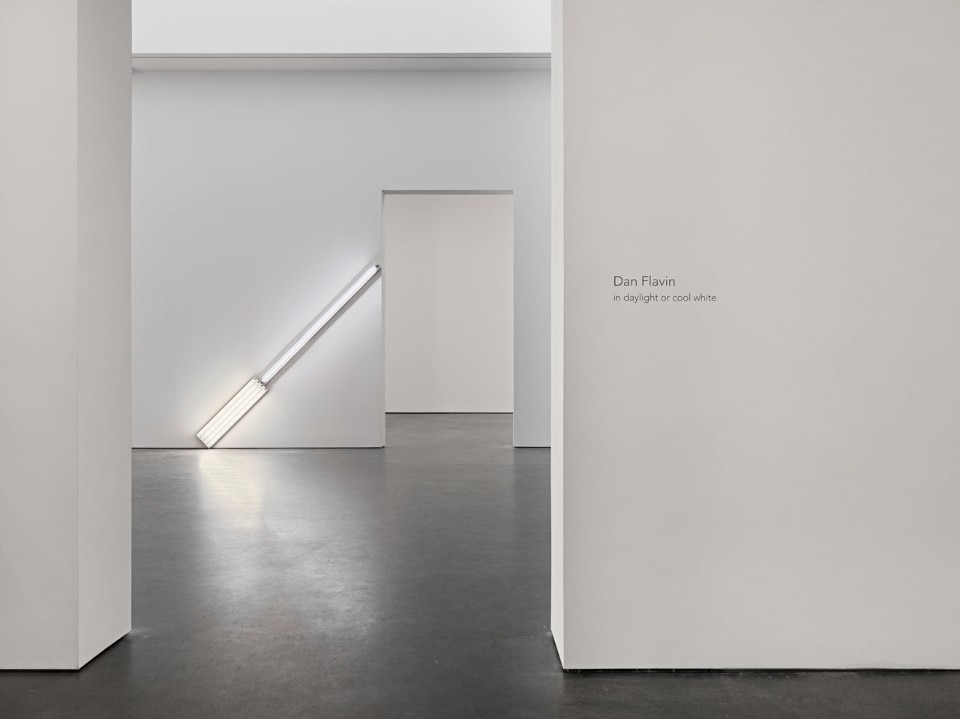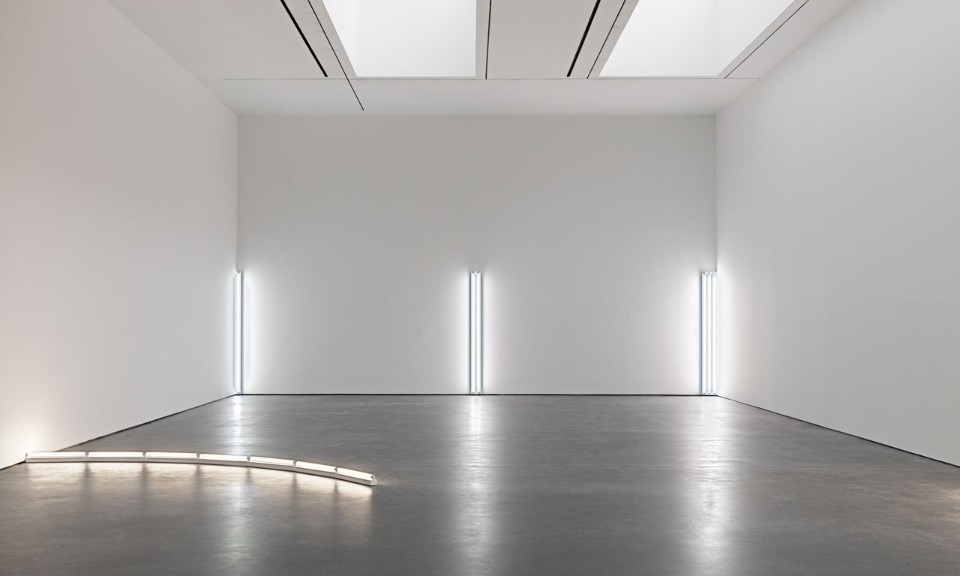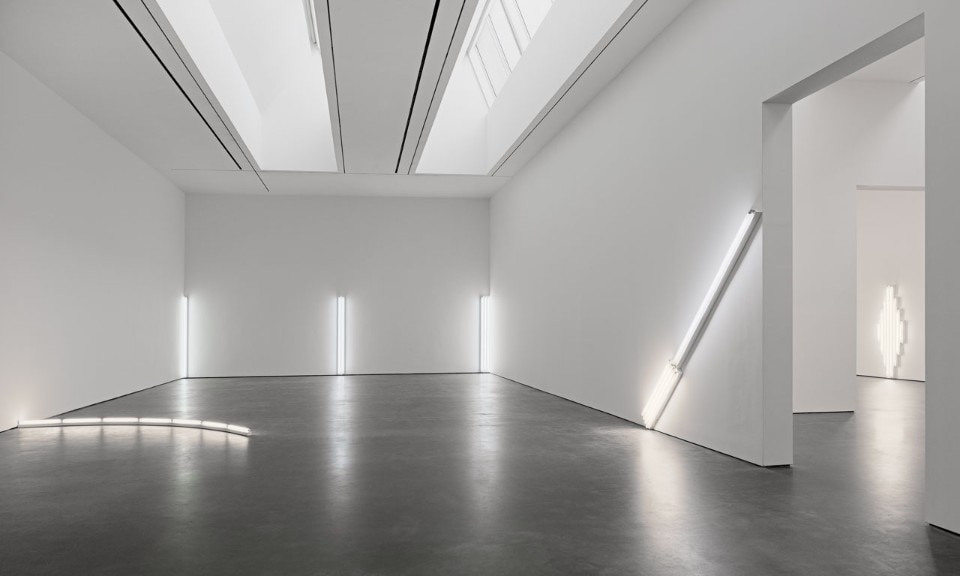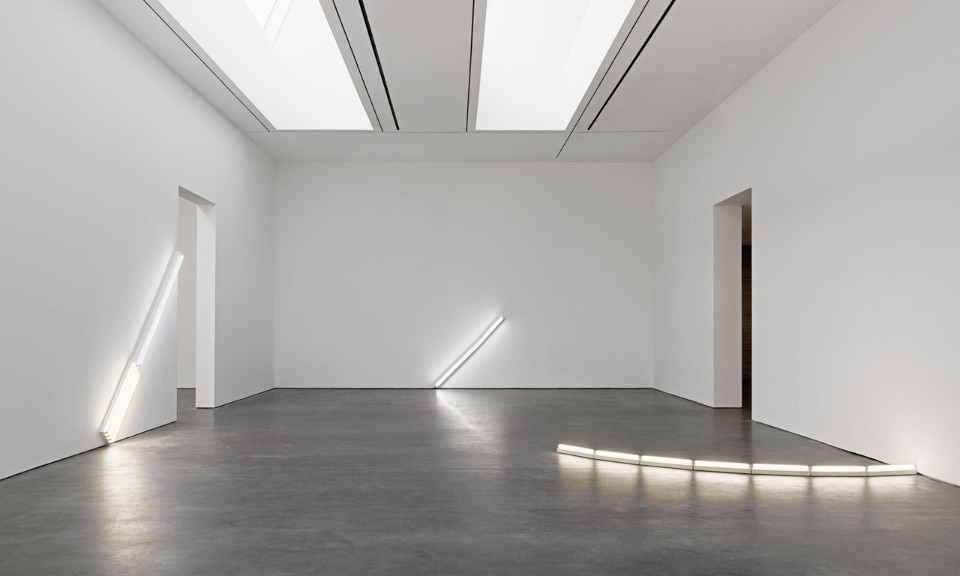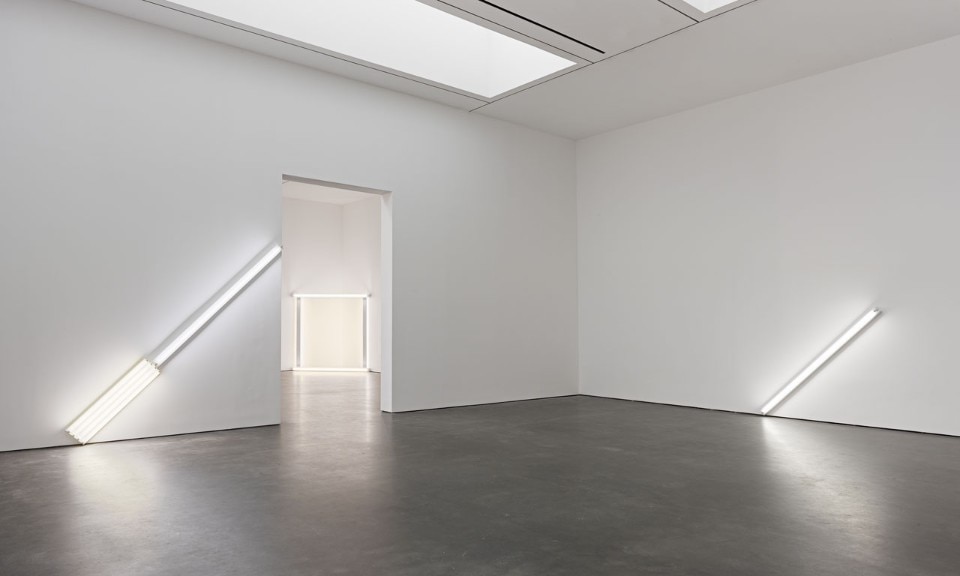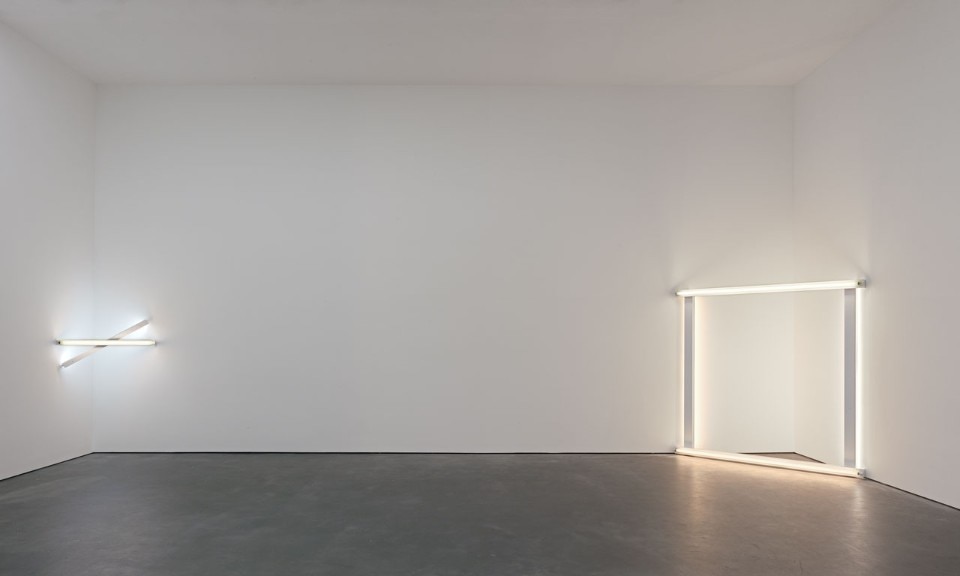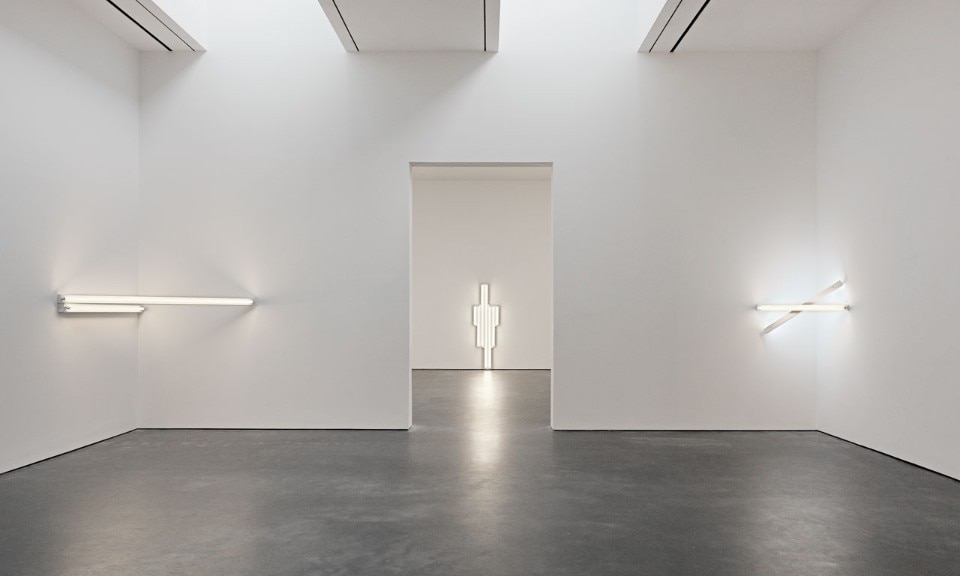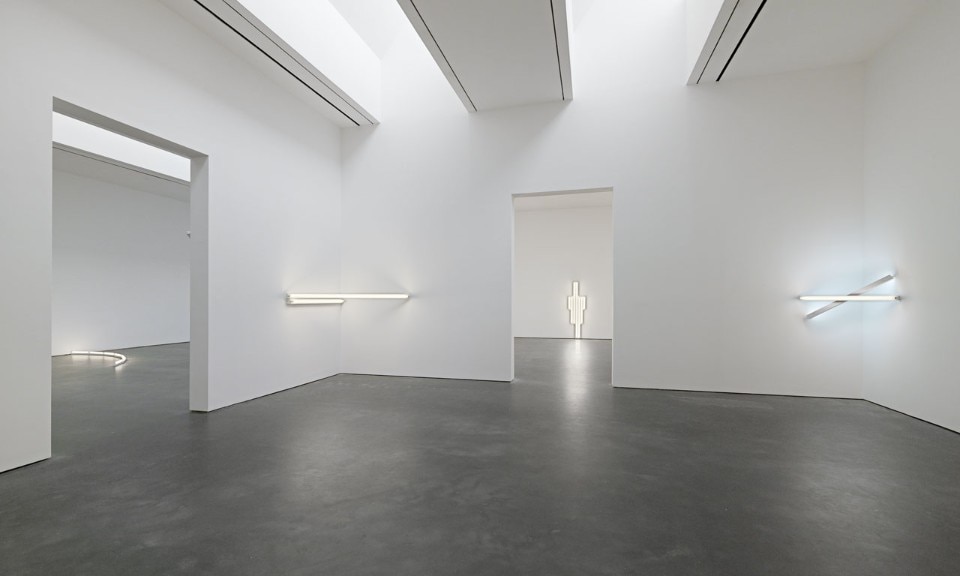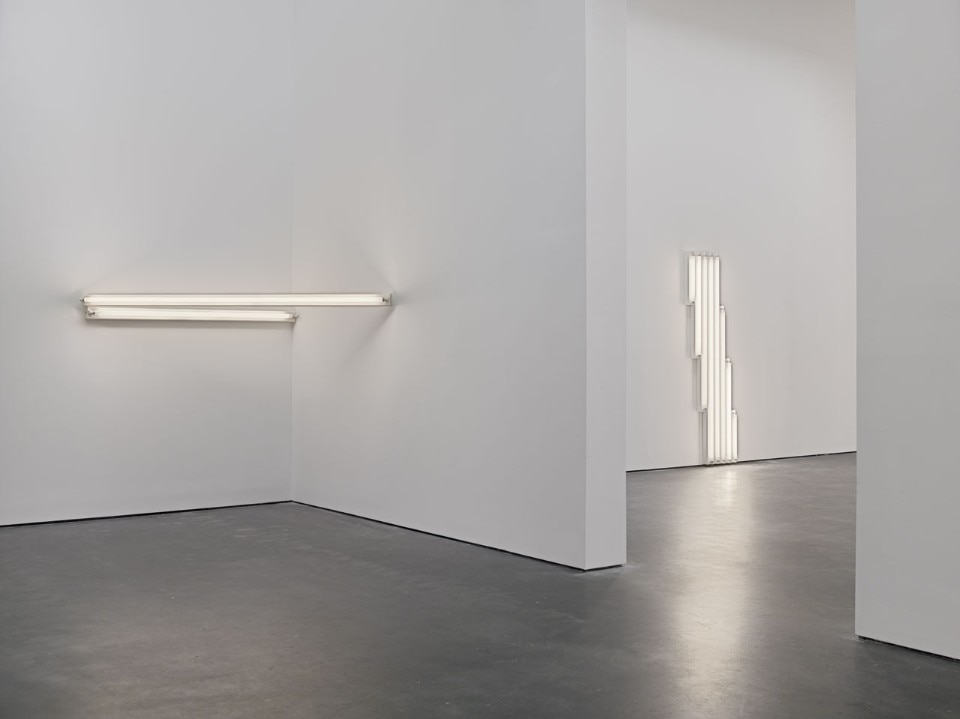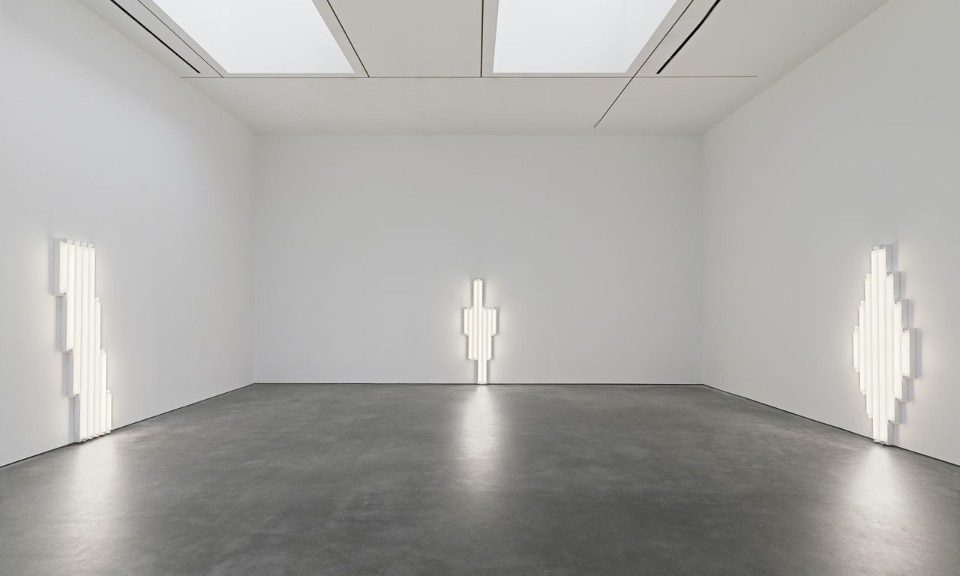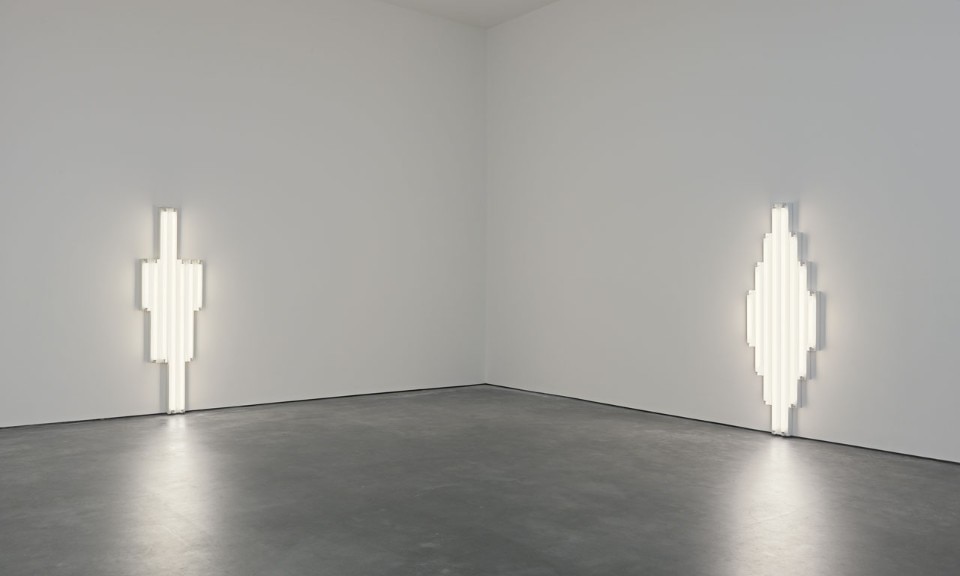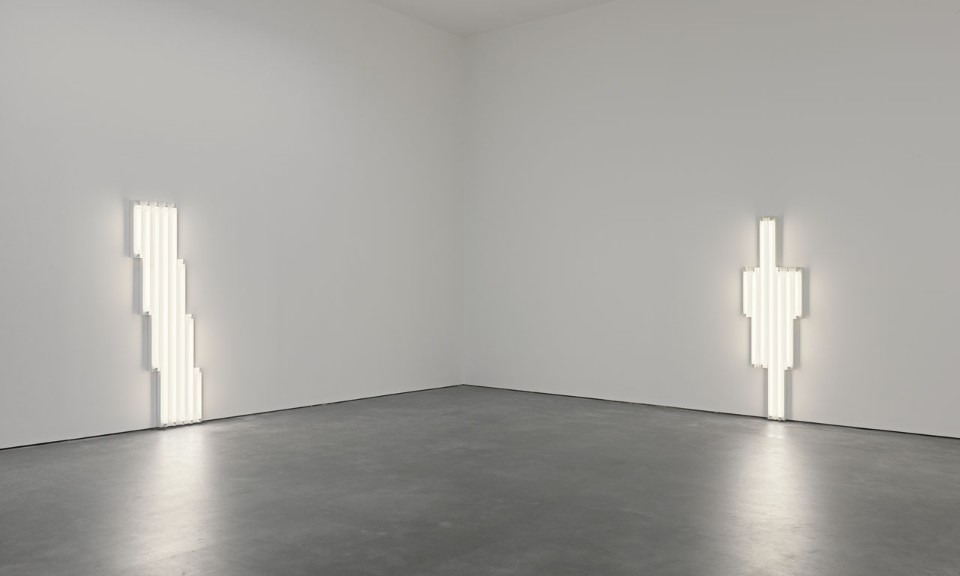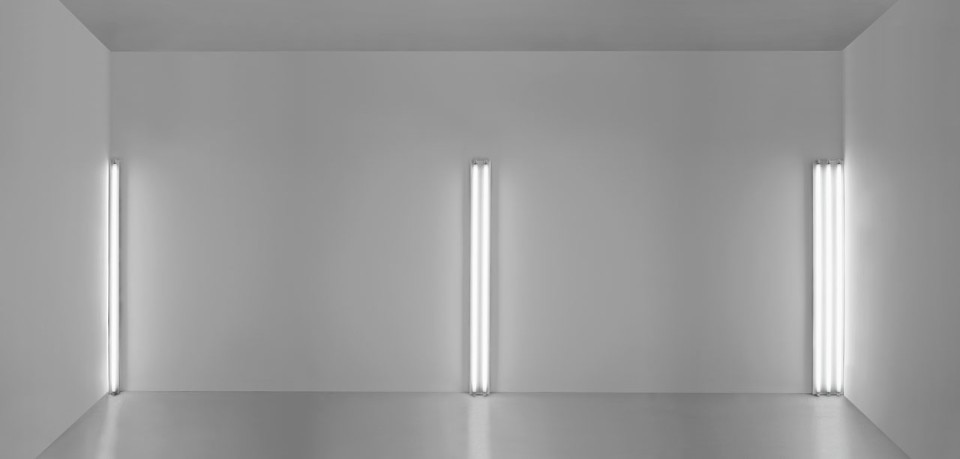In 1963, after having experimented with various formats, Dan Flavin decided to dedicate himself solely to installations with industrial, commercially-available fluorescent lamps, mostly coloured, of a length varying from 2 to 8 feet, with a diameter of 12 inches. The use of only one medium in different variations of colour allowed Flavin to concentrate on light as an element for the manipulation of space, a process which he was to study consistently (and ceaselessly) until his death.
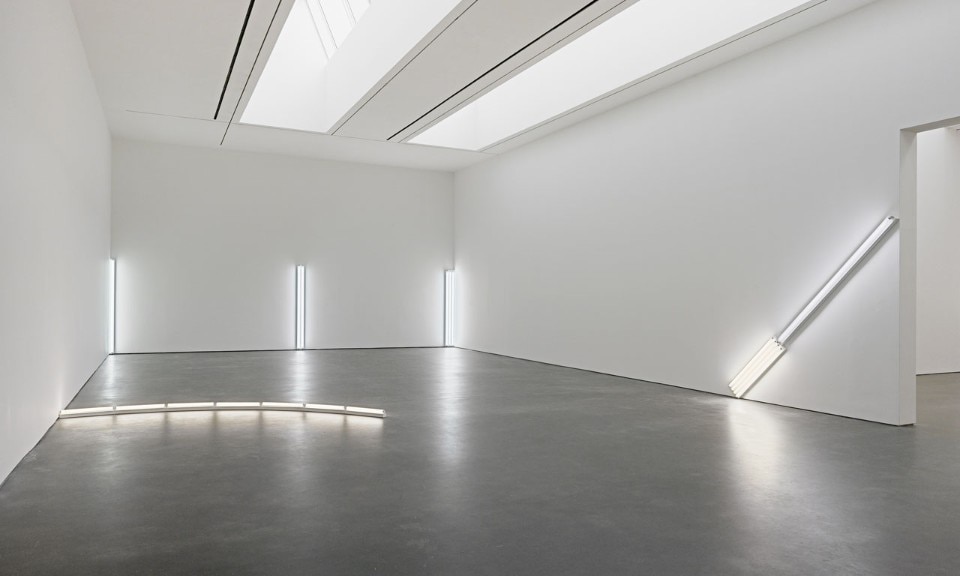
The exhibition in the David Zwirner gallery in New York is an opportunity to retrace the origins of Dan Flavin’s radial experimentation in his white works, produced from 1963 until the 1970s, a fundamental decade in the artist’s career. In this period, Flavin created the alphabet which he was to use in an ever-more articulated manner in his later works, using white fluorescent bulbs in different grades, defined by the temperature of the light: cool white, daylight , warm white , and soft white (a variation of warm white). He also discovered the relationship between architectural elements and light.
The fluorescent bulbs used by Flavin do not work in the same way as ordinary electric light bulbs. They contain a mix of gases which emit radiation when subjected to an electric current, radiation which reacts with the fluorescent material (phosphorous) which coats the internal surface and which, in turn, emits light. The different colours correspond to the different chemical compositions of the phosphorous. “Each one of the colours available has a specific effect which can only be balanced in relation to other lights”. Over the course of his career, Flavin has explored every nuance of this very limited set of potential variations, including the juxtaposition of whites of varying colour temperature”.
The title of the exhibition, “Dan Flavin: in daylight or cool white”, quotes the words of Flavin published in Artforum in December 1965, where the artist makes autobiographical observations and reflections on his first experiments. “What has art been for me? In the past, I have known It (basically) as a sequence of implicit decisions to combine traditions of paintings and sculpture in architecture with acts of electric light defining space”
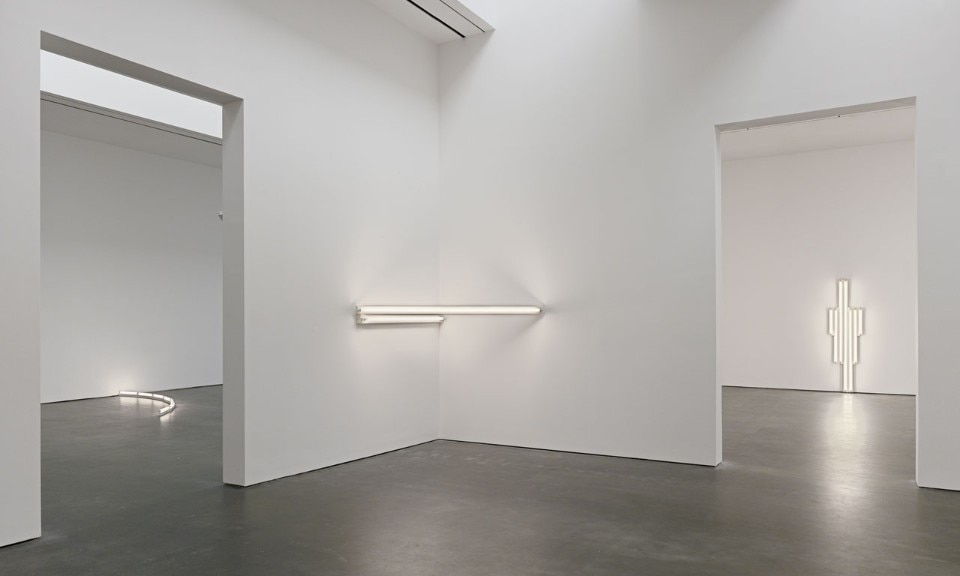
In these initial works, the manipulation of space and light takes place in a minimal manner, but one which is already very effective and skilfully calibrated. In an initial group of works on display, Flavin examines the theme of the relationship with the wall in a few gestures: the 45-degree angle of a single soft-while fluorescent lamp in Diagonal of May 25, 1963 (to Constantin Brancusi) dedicated to Brancusi and his totem-like Endless Column; a sequence of five daylight lamps in the nominal three (to William of Ockham) from 1963; the alternating of cold white and daylight lamps at the base of the diagonal in alternate diagonals of March 2, 1964 (to Don Judd).
In the numerous variations of “monument” for V, Tatlin of which there are three in the exhibition), he experimented with the dismantling and re-composition of cold white neon lights, creating veritable fluorescent sculptures. In untitled, from 1966, untitled (to Cy Twombly) 2, from 1972, he set out pairs of lamps diagonally, across the corner of the room. With Untitled (to Helen Winkler) from 1972, he completed the progression with the construction of a luminous square which enclosed the corner itself, cancelling it. The only intervention on a horizontal surface was Untitled from 1964, a curved arch of seven neons which came out from the wassl to reach into the centre of the room, a composition rarely used by Flavin.
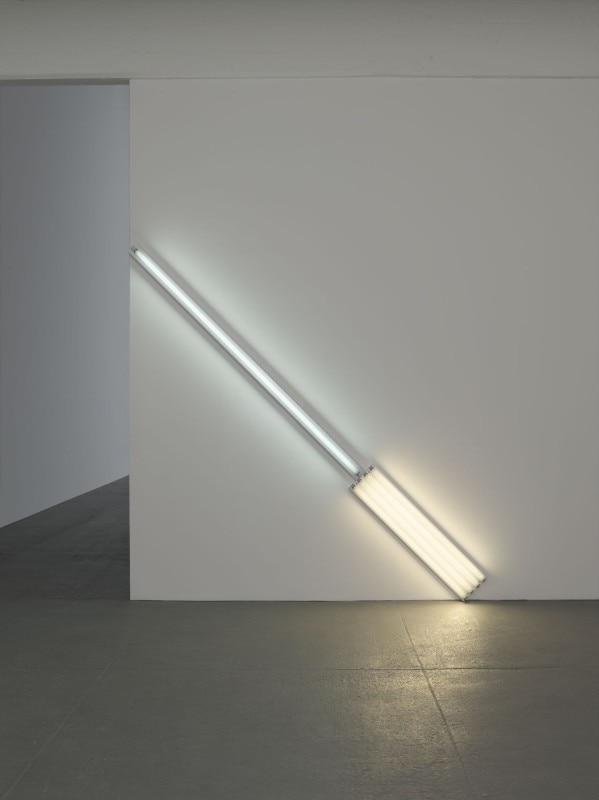
It was through the installation at the Green Gallery in New York in 1964 (with the work Pink out of a corner) and the 1969 retrospective at the National Gallery of Canada and Ottowa that Flavin discovered the potential of architectural space as an element of design. It was in the Ottowa exhibition that each installation found its precise collocation in relation to architectural elements, something which continues as a permanent rule in the installations to follow. Thus, Diagonal does not float in space, but is fixed to the floor, or at least to a wall; and the sequence of Nominal three is always installed with a tube in the left-hand corner of the wall, a couple in the centre and three in the right-hand corner. This is the system of relations and sequences re-proposed by the Zwirner Gallery in the exhibition space designed by Annabelle Selldorf, minimalist, and evocative of the industrial buildings of Chelsea. Designed with museum standards, it has been created, in the words of the architect, to host “works by masters such as Donald Judd and Dan Flavin”. This exhibition is proof.
There are only a few site-specific works by Flavin which can currently be seen by the public in the United States. They are mainly spaces where the artist has reached a high level of complexity in the composition of the colour neon lights. One of the last is in Marfa, as part of the project combining art, architecture and landscape, to which Donald Judd was dedicated for thirty years, transforming it into his personal art collection: Judd, here artist, collector and curator, commissioned works from colleagues and friends, assigning them a specific space in which to work.
Flavin was assigned six parallel and identical U-shaped buildings. In the space connecting the two longitudinal sections of each building, the artist installed pairs of symmetrical luminous barriers which occupied the entire height and width of the space, alternating neon lights in four colours: pink, green, yellow and blue. Untitled began in the 1980s, but was inaugurated only in 2000, following Flavin’s death in 1996.
In 1990 a four-colour site-specific work was commissioned for the Richmond Hall, an exhibition space which was part of the Menil Collection in Houston and finished two days before the artist’s death, while the Dan Flavin institute in Bridgehampton (New York), opened in 1983, holds nine works – again permanent – created between 1963 and 1981 with coloured light, again proposing environments (or “situations” as Flavin called them) where art and architecture are seen as a single installation.
- Exhibition title:
- Dan Flavin: in daylight or cool white
- Opening dates:
- 21 February – 14 April 2018
- Venue:
- David Zwirner Gallery
- Address:
- 537 West 20th Street , New York


